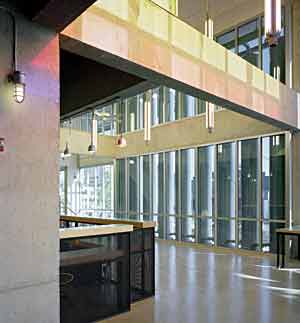The Green Market Reaches Critical Mass
Deciding what is green
Determining what is truly green can be relatively straightforward. "We've been using American hardwoods for centuries," says Susan Regan of the Hardwood Council, "and in contrast to some of the exotics and synthetics, there's no problem with hardwood toxicity, sustainability, or local availability. And durability is certainly a given with wood products' life cycles that span generations."
Other products are far more complex. Take vinyl or polyvinyl chloride for instance, used in siding, drain/waste/vent pipes, flooring, and windows. In 2000, during the process of developing LEED's Commercial Interiors rating system, credit was proposed for the avoidance of PVC materials. In December 2004, a USGBC task force released its draft report which found the "evidence does not support a conclusion that PVC is consistently worse than alternative materials on a life cycle environmental and health basis," and recommended against a credit for excluding vinyl in the LEED rating system. The USGBC Task Force is still reviewing comments from experts in different disciplines and will be releasing a final report.
|
||||||||||||||
Allen Blakey, Director of Public Affairs at The Vinyl Institute points out that vinyl is highly durable and has many benefits-vinyl windows are thermally effective and vinyl-roofing membranes reflect heat.
Knowing the benefits of products is only part of the challenge of green design. Key to the design of any building is mastery of the specification process that earning a Construction Specification Institute (CSI) certificate provides. When applying for LEED certification, it is especially critical to avoid the risk of failing to attain certification due to a technical error. "Unique skills are necessary to develop the technical documents that permit the seamless integration of LEED's specific requirements into a project," says former CSI president Ross Spiegel, FCSI, CCS, CCCA, AIA, LEED-AP and CSI Liaison to the U.S. Green Building Council. "Whether it is the requirements for a construction waste management plan or low VOC content for paints, coatings or adhesives, the CSI Certified professional intuitively knows how and where these requirements fit into the contract documents.
In addition, they are well-suited to orchestrate the process necessary to submit for LEED Certification at the completion of the project's construction."










